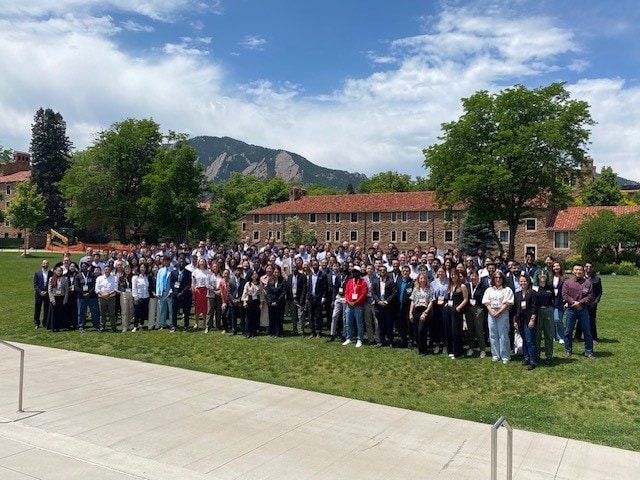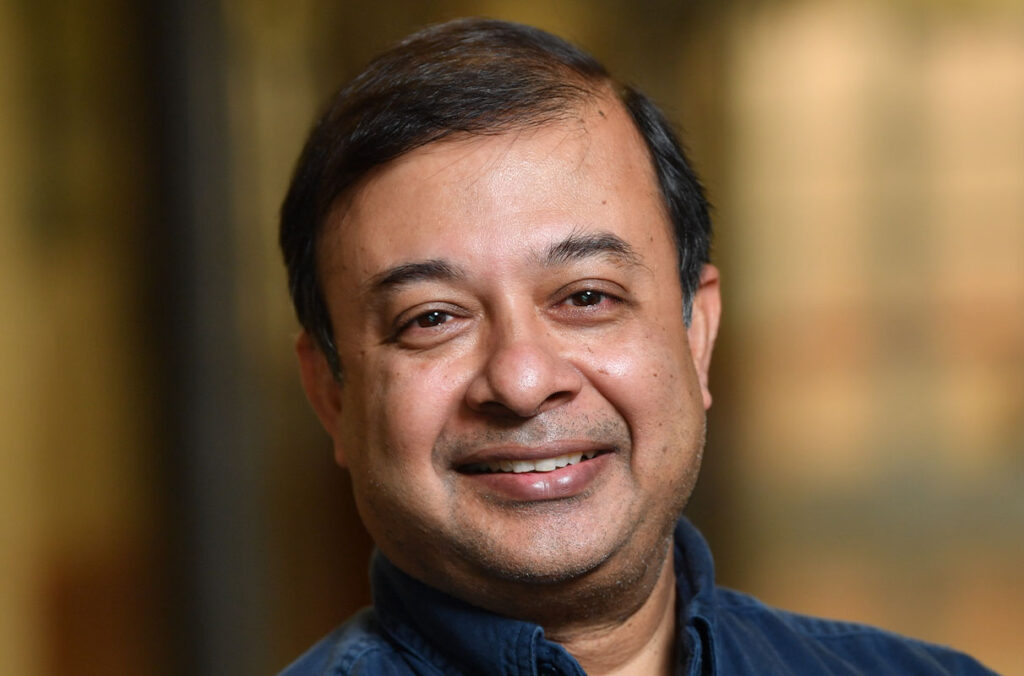
First row (left to right): Catt Sencion, Carla Thompson, Maria Aguilar, Nicole O’Shea, Scott McCormack, Toyin Malomo, Carmen Wright, Tessa Heavlin-Martinez, Katie Blackwood, Miguel Ramerez. Second row (left to right): Lissette Rodriguez, Jason Turner, Erika Ruiz, Raith Orellana, Scarlet Coronel, Pravel Martinez, Eddie Salazar, Ciro Cervantes, Jeremy Heavlin-Martinez, Miguel Moreno, Fox Thorpe, Ronald Peters, Marty Hall.
ACerS NorCal, in collaboration with the CGIF, MESA, and NSF, hosted a teacher training event at UC Davis on Oct. 27, 2024. The goal of the event was to train 11 high school teachers from different high schools in the Sacramento area in addition to nine MESA staff how to use the CGIF Materials Science Classroom Kits. Twelve Materials Science Classroom Kits were donated to each of the high schools through the support of the CGIF and MESA staff.
The Materials Science Classroom Kits contain most of the items required to perform a series of activities. The NSF supported the acquisition of the additional items to ensure the teachers would be prepared to perform any activity in the classroom on return. This event was led by Scott J. McCormack (ACerS NorCal, UC Davis), Fox Thorpe (ACerS NorCal, UC Davis) and Nicole O’Shea (ACerS NorCal, UC Davis).
The MESA team included Carla Thompson and Catherine Sencion who identified the teachers and coordinated the meeting venue. In total, the event attracted 20 participants. There were three returning teachers who were allowed to present their experiences using the kits in the classroom with the students. There was an 120% increase in the number of teachers and increase in the duration by on hour compared to the first event in 2023.
The Teacher Training Materials Science Classroom Kit event began with lunch and an ice-breaker activity. This activity involved each participant introducing themselves and where they were from. This was then repeated, where each participant introduced themselves a second time but then said what their favorite material was and why. The goal of this was to ensure participants would remember each other’s names and to get everyone thinking about the different materials available.
McCormack then led a short lecture titled “Mastering Materials for Humanity,” with the goal being to engage and excite the teachers by informing them of materials innovations that fundamentally transformed society. We wanted the teachers to understand that materials engineering underlines all other fields of engineering.
First, a discussion question was posed: “Do you ever wonder how we built this civilization, with all of its complex machinery?” This discussion had teachers notice material innovations within the room, such as the steel beams holding the building together along with the semiconductors within their smartphones. The lecture then continued to highlight key material disruptors throughout history, including the use of early ceramic tools and the transition to the stone age; the implications of the iron age and how samurai swords were crafted to be some of the best swords in the world; the challenges of extracting Al from bauxite; and how Al enabled the aerospace industry. This ended with a discussion on the material challenges associated with quantum computers and what is being done to overcome this grand challenge.
McCormack then introduced the teachers to the science kits, detailing several activities and doing an “unboxing” at the front. Teachers came up to interact with the unboxing. Then there was a break for lunch that included networking between teachers, UC Davis students, MESA members, and McCormack.
Miguel Moreno, Maria Aguilar, and Katherine Blackwood, teachers who participated in the first Teacher Training Materials Science Kit event, presented their experiences on using the kits in the classroom. They highlighted how they were able to integrate the kits into curricula and where certain activities were difficult to integrate. One specific challenge that was highlighted was the implementation of lesson plans. Teachers specifically said that if lecture slides with resources were attached to each activity, it would make it far easier for them to seamlessly integrate into the classroom. These comments were noted and will be reported to the ACerS President’s Council of Student Advisors to help develop.
Thorpe and O’Shea then led several activities from kits. The activities performed included:
- Candy Fiber Pull
- Hot or Not? (Refractory Brick Demonstration)
- Piezoelectric Materials
- Glass Bead on a Wire
All five teachers interacted in the activates and asked engaging questions. For example, a strong discussion on the difference between glasses and liquids and crystalline versus amorphous structure followed that of the Candy Fiber Pull lesson. A strong discussion on heat transport and heat capacity followed the Hot or Not lesson. A more detailed discussion of piezoelectric materials and their applications in timekeeping along with other electronic systems was discussed. An introductory discussion of the functional properties of glasses and oxidizing/reducing flame regions took place.
This event was a huge success. It is the intent to expand this event in 2025 to include 20 schools in the Sacramento area. A similar agenda will be followed but over a longer time. Selected participants from this event will be invited to present five to ten minutes on their experience of using the kits in their classrooms at their home universities.
It is the intent to apply for a grant from the CGIF again to obtain additional kits to donate to these new 20 teachers from 20 different schools in the 2025 event. In addition, the MESA team has become very interested in the materials science kits. We also plan to submit an additional proposal for additional kits so they will be able to interact with middle and high school students independently of the McCormack Laboratory.
Author
Vicki Evans
Spotlight Categories
- Section News
U.S. Sections
- Northern California


